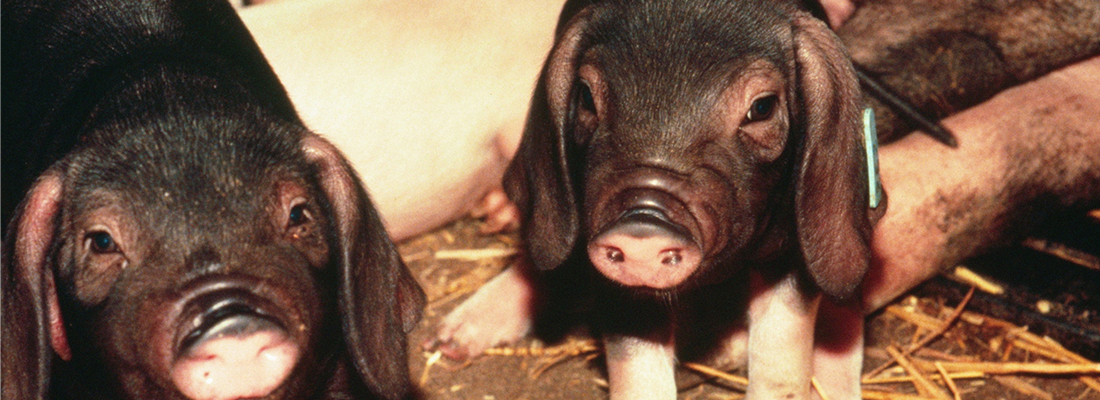Agroecology Reading time 3 min
Towards more robust piglets at birth!
Published on 05 July 2018

For all mammals, birth is a critical time when the newborn's ability to survive is a real challenge, especially in the first 24-48 hours. In breeding, one sow gives birth to about 14 piglets. Mortality varies between 10 to 20% before weaning: the problem is due to a lack of maturity. The muscle plays a very important role: it must ensure immediate motor skills allowing the piglet to reach the nipples to ingest the colostrum and ensure its thermal regulation.
To identify the genes involved in this development of muscle maturity, the researchers were interested in two divergent pig lines (European and Chinese) with regard to their birth mortality. The 90 and 110-day stages of gestation (birth occurring after 114 days of gestation) were retained by scientists who focused on the end of gestation corresponding to the maturation process of tissues and organs allowing survival at birth. During fetal development, gene expression fluctuates. Based on gene expression data at these stages, statisticians have developed approaches to build networks of co-expressed genes. Genes whose expression is correlated with that of the growth factor gene "IGF2" were particularly considered.
In parallel, at the cellular level, biologists have studied through molecular cytogenetic and microscopic approaches the position a gene takes in the nucleus according to its expression status. We have known for about ten years that the genome is not randomly distributed in the nucleus: the chromatin that constitutes the genome is more or less condensed, decondensed. These DNA loops allow interactions between genes located at a greater or lesser distance on the genome, or even on different chromosomes. Thus, for the first time, for any species combined, these researchers have shown that the IGF2 gene, when expressed, is associated with other genes also expressed in the nucleus of these muscle cells at these stages of development.
It was at this time that an innovative statistical method for network construction taking into account these gene association data was developed. It suggested new associations between genes: some, such as that between IGF2 (growth factor) and MYH3 (an embryonic myosin*), had never been observed before. These associations between genes have been validated by microscopy and are therefore used iteratively for the construction of new networks.
This study identified potential regulators of these genes (IGF2 and MYH3) as well as new functions related to fetal muscle development. Additional functional studies to determine if and how these genes are co-regulated will help to better understand the mechanisms involved in establishing pig muscle maturity in order to eventually reduce the birth mortality rate of piglets and thus increase their robustness.
* Myosin is a protein that plays a fundamental role in the mechanisms of muscle contraction.
Reference:
Marti-Marimon, M., Vialaneix, N., Voillet, V., Bouissou-Matet, M., Lahbib-Mansais, Y., Liaubet, L. (2018). A new approach of gene co-expression network inference reveals significant biological processes involved in porcine muscle development in late gestation. Scientific Reports, 8, DOI: 10.1038/s41598-018-28173-
